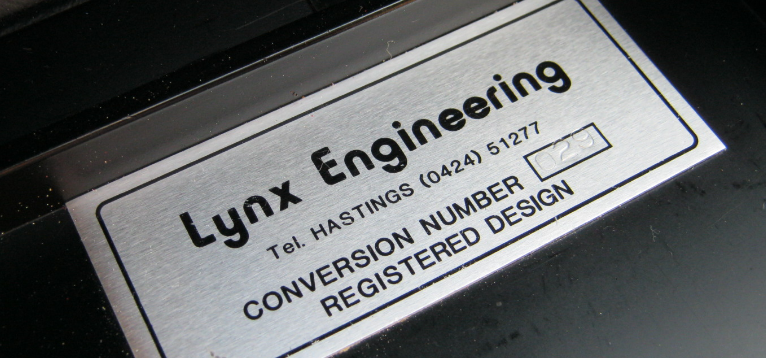Made in Hastings – the Jaguar XJS based Lynx Eventer
From a base on the Castleham Industrial estate a small but dedicated team made one of possibly the most beautiful ‘estate’ cars ever conceived – the Lynx Eventer, based on Jaguar’s XJS sports coupe.

Lynx Engineering made its start in 1973, building faithful replicas of the Jaguar C and D-Type in a converted farm near Rye. Company heads Elgan Howell, Chris Keith-Lucas, and Guy Black never intended to become Jaguar specialists – the name had been taken from another stalwart British classic, the Riley Lynx – but through the course of original restorations, their expertise shone through.
When a customer brought in an XJ6 and asked for it to be converted, to become a convertible, the three men decided it was time to switch direction. Convertible conversions were to be the way in to a new market for the company and the newly-launched Jaguar XJS was the way forward
 Soon, from its Castleham factory, Lynx Engineering was performing four-seater convertible conversions of the XJS, business was flying the company had carved out a lucrative niche for itself, but then Jaguar dropped a bombshell when it introduced its own XJS convertible in 1988 albeit only in two seater form.
Soon, from its Castleham factory, Lynx Engineering was performing four-seater convertible conversions of the XJS, business was flying the company had carved out a lucrative niche for itself, but then Jaguar dropped a bombshell when it introduced its own XJS convertible in 1988 albeit only in two seater form.
So, the company went the other way and instead of a convertible, it transformed the XJS into the Eventer estate – and created possibly the most quintessentially British vehicle in existence at the time – or ever.
It was a sleek V-12 ‘station wagon’ most definately not an ‘estate’ with three doors and all the wood and leather you could muster: how more quintessentially British could you get?
Lynx imbued the XJS with added visibility, rear-seat room, proper boot space and that whiff of exclusivity. Each conversion took 14 weeks and the attention to detail was magnificent.
 To develop the Eventer, Lynx cut off nearly all of the bodywork behind the bulkhead, moved the fuel tank and raised the rear floor to create a flat surface stretching all the way to the rear seats. They also stiffened the suspension to compensate for the centre of gravity being raised by three inches.
To develop the Eventer, Lynx cut off nearly all of the bodywork behind the bulkhead, moved the fuel tank and raised the rear floor to create a flat surface stretching all the way to the rear seats. They also stiffened the suspension to compensate for the centre of gravity being raised by three inches.
An early roadtest of the conversion by the well-respected magazine Motorsport reported: “Apart from a minor irritating rattle, caused by a loose trim panel, the Eventer prototype might well have been straight from the Jaguar factory: the high quality of the conversion is enhanced by the fact that Lynx has re-sprayed the car in its entirety without recourse to any vinyl roof treatment over the modified body panels.”
The style was supposed to remain as faithful to Jaguar’s original as possible.
Ultimately, Lynx built around 67 Eventers. An Eventer conversion cost £6,950 in 1983 money, or nearly £19,000 today.
Jaguar may have disrupted Lynx’s operations with its own convertible, but for a long time the Eventer was the only estate version of a Jaguar that existed. It was not until the X-Type Sportwagon of 2004 that Jaguar made an estate of its own and then the XF Sportbrake followed in 2012.




“but for a long time the Eventer was the only estate version of a Jaguar that existed”
Not true. There were a number of custom estates available including the Avon XJ6 estate. Previously estates of the Mark 2 and Mark 8 had been produced.
The Eventer was a fantastic design by Lynx and you would have thought Jaguar would have come out with something similar. Rather like MG did after the Costello V8 MGB – Rover 3.5 litre engine.
There was even a one off XK150 shooting brake made.
Pity the Eventer only came with the gas guzzling V12 – 5.3 lire engine